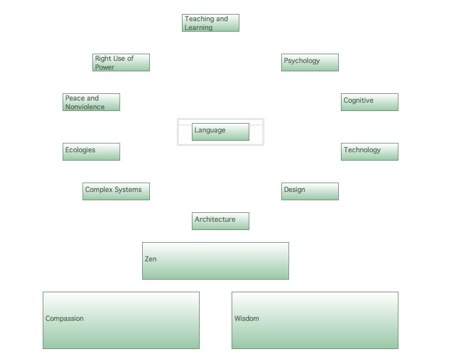IVICA: the leaf
On June 19, the researchers who study spatial hypertext and related areas will hold their grand, irregular festival, IVICA. (I sha’n’t be gone long. — You come too. It’s one day, and not very expensive. It’s colocated with Digital Libraries, but you needn’t sign up for the whole conference.)
I didn’t have a paper to send this year, and so the organizers invited me open the shebang. I’m going to say a few words about the day when “A Narrative, a Picture, and a Link Walk Into a Bar”.
I’d like to take a piece of that argument and explore it here. First, because it has interesting implications for Tinderbox and for the way we use Tinderbox maps — especially for information gardening. Second, because it raises interesting questions for all kinds of interface design, from operating systems to preference dialogs.

Our information maps are, chiefly, boxes and arrows. When screens were very small, we had no choice. With only 512x384 monochrome pixels , every bit of screen real estate mattered terribly. Every pixel still matters, and we certainly cannot waste them, but perhaps we now have enough cushion to consider a broader views.

Why use a box, for example, and not (say) a leaf? Boxes use space efficiently, and they’re easy to draw, and at some level of abstraction everything is a box. But then, at some level of abstraction, everything is a curve. How might information farming and information gardening benefit if we moved beyond boxes and lines?
The peril, of course, is chart junk — decorating our maps to make them look good or to impress (or baffle) managers. That’s always a mistake, though it sometimes seems an effective short-term strategy.
Can we make our maps more meaningful? More expressive? Can we perhaps make it more likely that an unconscious or accidental juxtaposition of ideas on the map will trigger reflection and understanding — what Nakakoji and Yamamoto call “representational talkback?”
Twitter: #ivica, #infoFarming